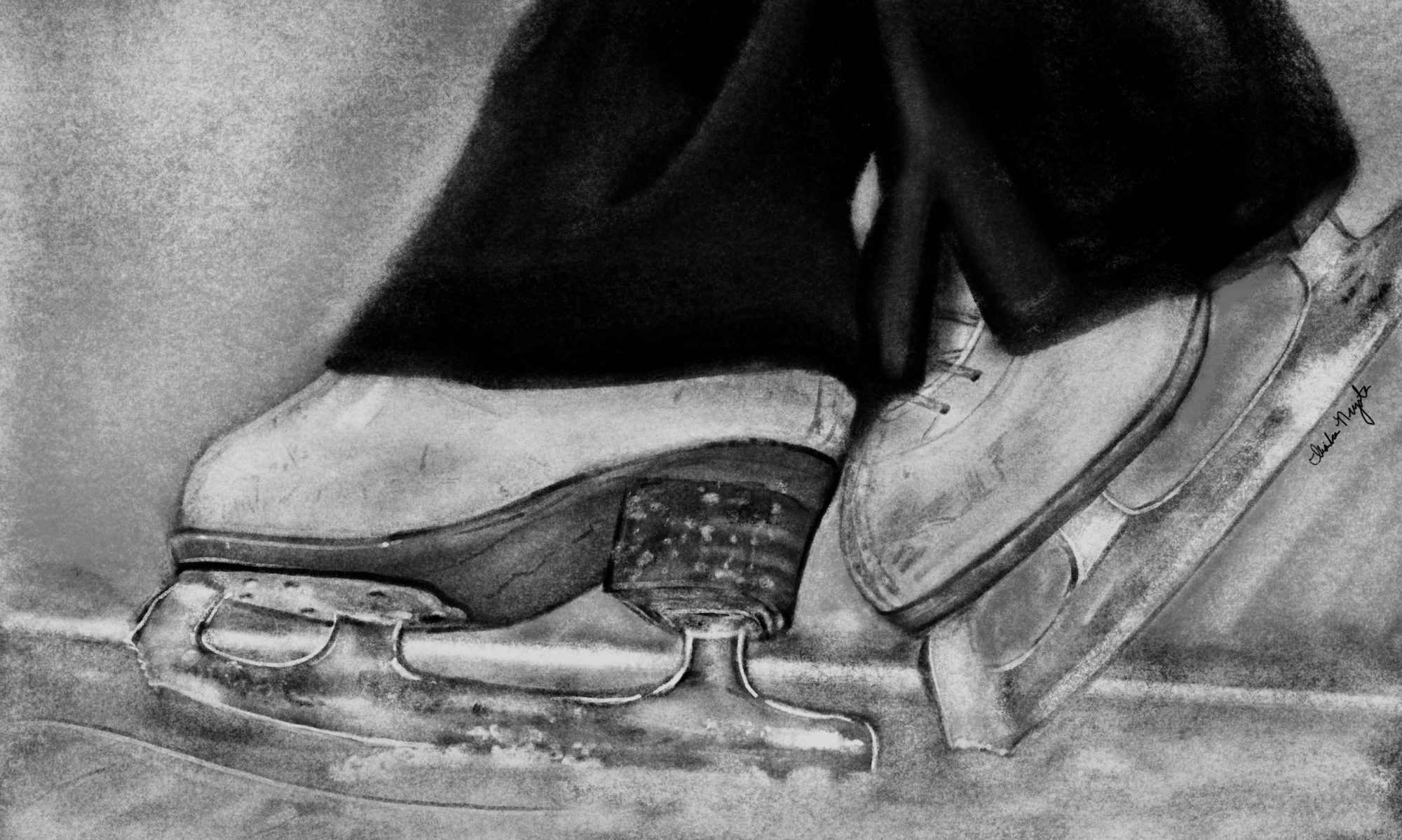It’s the morning of her short program and Skatergirl is on her 20-minute practice ice.
Her warm-up has been great so far. She feels the exhilaration of the competition, feeding off the high energy of the other skaters on the ice with her. Every one of them is doing their own thing with focus and determination.
It’s time to warm up her triple Sal…shoot, she fell on her first attempt.
Her coach says to keep her left side closed. Okay, she’ll get it this time. Instead, she turns out on the landing. Skatergirl becomes frustrated.
Coach says to move on but the voice is muffled. Skatergirl’s mind is focused on trying to “Sal-vage” her jump. She does a few more repetitions, but each time, her worry about what may happen with her sal in the program increases. She practices over and over again but isn’t happy with the results.
The 20-minute practice ice is done and she gets off the ice looking down at her feet.
Her coach is encouraging, “Don’t worry about it, put it behind you. When you do your program, just go up and do it like you do at home.”
Despite the consoling words, Skatergirl keeps worrying about it, thinking about all the “what if?” scenarios.
She tells herself that she has one more chance – the 6-minute warm up. If she lands the Sal, everything will be fine.
But alas, she goes into the 6-minute warm up distracted and worried about landing the jump. It has become an obsession. She messes it up but keeps doing it instead of following her normal routine. Her coach pleads with her to move on. All too soon, the warm up is over and she hasn’t done any of her spins or her footwork.
Her confidence has taken a hit. She is nervous and super frustrated, not the competition mindset she needs as she goes into the short program.
The Lost Routine
Skatergirl worked herself up into a frenzy by following her emotions. Her obsession with landing her triple Sal blew her pre-competition routine out of the water. She didn’t realize she was off track and she couldn’t “hear” her coach who was trying to get her back on track.
Now she is frustrated, worried and stressed. Her confidence has taken a hit, which makes skating more difficult.
Her mental game and her mood have spiralled down to a point where she might not be able to get back on track for her short program.
The Necessary Routine
The purpose of a routine is to provide structure and stability. Routines help you keep decision making to a minimum. A routine allows you to handle unexpected problems more easily, then shift back into your routine with minimal disruption.
When you throw out your routine, you short circuit more than just a “to do” list. Your ability to be relaxed and ready to skate your program, with a mindset that is calm and composed is also put at risk.
Your pre-competition routine helps gets you competition ready and keeps you on track to excel on the ice both mentally and physically.
The Success Routine
Having a pre-competition routine will help you move along more smoothly through the competition day.
“Every athlete acquires routines as a way to help control nerves.” Hope Solo
This routine can start anytime from when you wake up, too when you arrive at the rink.
It can include the drive to the rink, competition preparations like dressing, doing your hair and makeup, off ice warm up, practice ice and 6-minute warm up. Basically, everything you do leading up to your turn to skate.
- Have a pre-competition routine and practice it before you get to the competition
- During practice ice, stick with your routine. Do what you usually do to warm up for your program elements, and get off when you are done.
- Choreograph your 6-minute warm up and practice it before you get to competition.
- Listen to your coach when they tell you to move on. They are there to keep you on track.
- If you make a mistake, take a deep breath, blow it out, and move on to the next thing on your list.
If you get stuck on one element or one part of your program during warm up, remember that worry and frustration can kill your performance. Instead of getting side tracked, stick to your routine. Your routine is there to keep you on track mentally and physically. When you lose your way, your routine will get you back on track.
Once you set up your pre-competition routine, you are “en route to routine success.”
Do you have a pre-competition routine? What is one of the craziest things in your routine? Share in the comments or shoot me an email!
Mental skills training can make a difference because it can help you access what is already there during competition and practice.
Start here; download “Confidence Myth Busters,” a complimentary eBook and make a change.

Thank you for the great info! I have tried some of your techniques such as having my “game face” on. Even at practice so that some things are second nature when I am ready to compete again. I will definitely utilize these methods in your article.Even at regular practice this will help to work past jumps that are not “on” and build skills and strengthen my program. Thank you so much for the wonderful tips!
Hi Autumn, Thanks so much for letting me know that this was helpful for you. One more tip about your “game face.” Get it to be relaxed and pleasant. Many times athletes think that this face needs to be serious and tense. Actually, being tense in your face will carry over to your neck and shoulders and on down the line. Skaters need to be relaxed and ready in order to execute their skills. Take care and let me know how things are going! Coach P